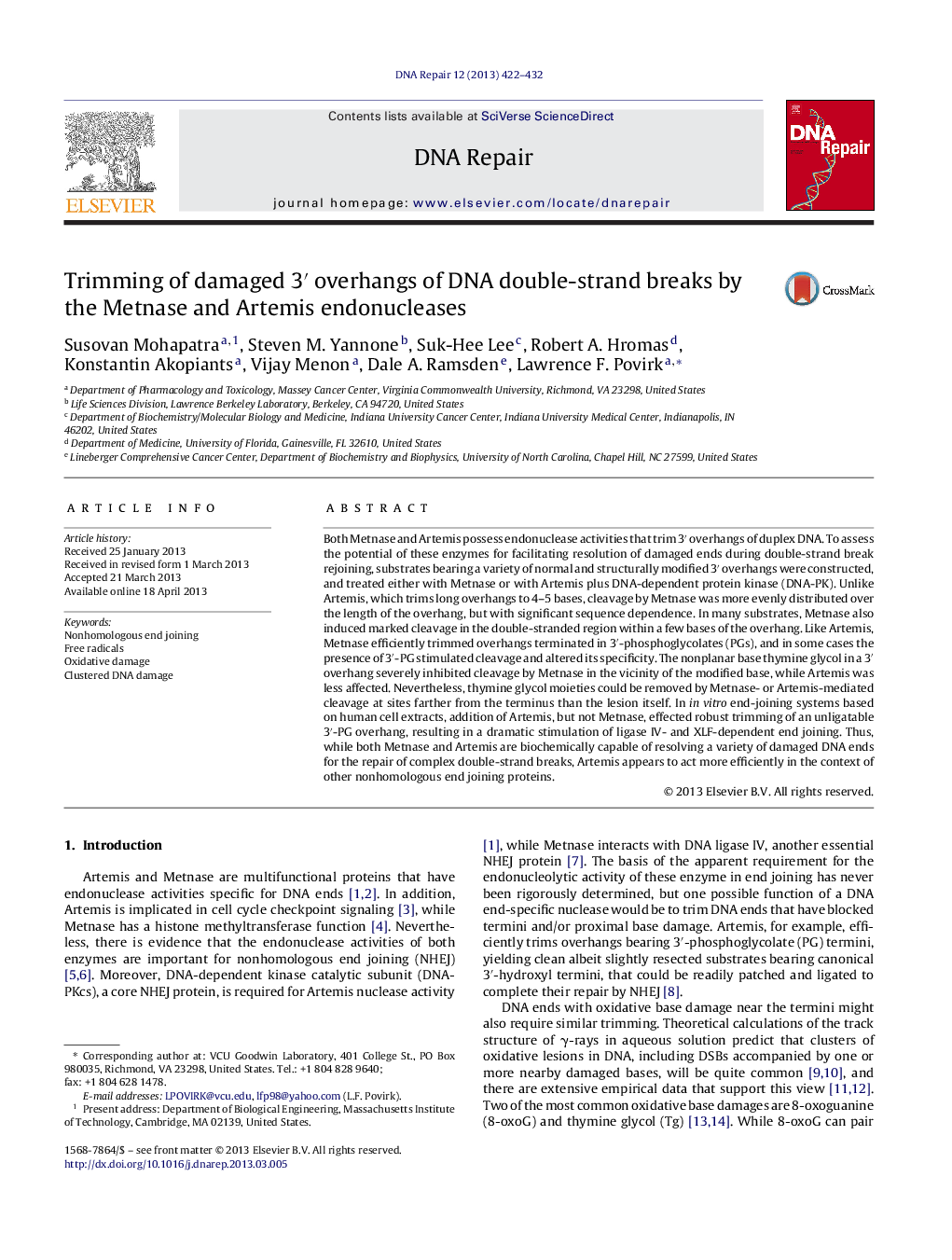| Article ID | Journal | Published Year | Pages | File Type |
|---|---|---|---|---|
| 1980278 | DNA Repair | 2013 | 11 Pages |
Abstract
Both Metnase and Artemis possess endonuclease activities that trim 3â² overhangs of duplex DNA. To assess the potential of these enzymes for facilitating resolution of damaged ends during double-strand break rejoining, substrates bearing a variety of normal and structurally modified 3â² overhangs were constructed, and treated either with Metnase or with Artemis plus DNA-dependent protein kinase (DNA-PK). Unlike Artemis, which trims long overhangs to 4-5 bases, cleavage by Metnase was more evenly distributed over the length of the overhang, but with significant sequence dependence. In many substrates, Metnase also induced marked cleavage in the double-stranded region within a few bases of the overhang. Like Artemis, Metnase efficiently trimmed overhangs terminated in 3â²-phosphoglycolates (PGs), and in some cases the presence of 3â²-PG stimulated cleavage and altered its specificity. The nonplanar base thymine glycol in a 3â² overhang severely inhibited cleavage by Metnase in the vicinity of the modified base, while Artemis was less affected. Nevertheless, thymine glycol moieties could be removed by Metnase- or Artemis-mediated cleavage at sites farther from the terminus than the lesion itself. In in vitro end-joining systems based on human cell extracts, addition of Artemis, but not Metnase, effected robust trimming of an unligatable 3â²-PG overhang, resulting in a dramatic stimulation of ligase IV- and XLF-dependent end joining. Thus, while both Metnase and Artemis are biochemically capable of resolving a variety of damaged DNA ends for the repair of complex double-strand breaks, Artemis appears to act more efficiently in the context of other nonhomologous end joining proteins.
Related Topics
Life Sciences
Biochemistry, Genetics and Molecular Biology
Biochemistry
Authors
Susovan Mohapatra, Steven M. Yannone, Suk-Hee Lee, Robert A. Hromas, Konstantin Akopiants, Vijay Menon, Dale A. Ramsden, Lawrence F. Povirk,
